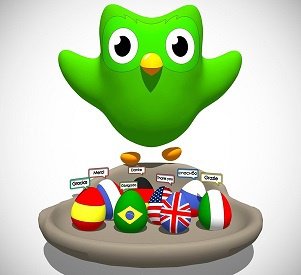Over 21 million people around the world are learning Spanish as a second language, and for good reason. It has the second largest number of speakers in the world, sounds beautiful and is considered relatively easy to learn.
While no technique is a guaranteed way to learn Spanish quickly, three simple principles of language learning are vital: you must devote a lot of time to the language, immerse yourself in the study for at least a few months, and learn using effective methods.

This may seem like a daunting task, so in this article we break it down into simple, actionable steps. Ready to start? Keep reading to find out where to start and how to learn Spanish fast.
How long does it take to learn Spanish?
It takes the average person about 575-600 hours or 24 weeks of face-to-face study to learn Spanish from zero to fluency. That is, if you study one hour a day, it will take about a year and a half. “Language fluency” is difficult to define because everyone progresses at a different rate and there are many factors that contribute to this.
If you are interested in learning Spanish quickly, then you should be committed to it. Use Spanish as often as possible for the first 3 months. Read, listen and, of course, speak Spanish.
Popular Ways to Learn Spanish Fast
There is no single best way to learn any language. A combination of different teaching techniques is required, and each person should have an individual approach. Regardless, the best place to start is by using Spanish as often as possible. The more you do, the faster you will progress.
Language school
With so many methods, apps, and games available for learning Spanish online, it’s hard to believe that traditional Spanish lessons are no longer needed. However, if you really want to learn a language, there is no substitute for vocational training. Attending a language school is a clear and easy way to do this, but it is worth considering the changes that have taken place due to the pandemic.
Spanish private lessons with a tutor
Private Spanish lessons with a tutor means that you will have the opportunity to speak Spanish from the very first lesson. Some students have been taking Spanish lessons for years but still struggle to form one sentence. Others manage to strike up a simple conversation in just a week or two. What is the difference? The second group spoke before they felt “ready!” Speaking is a completely different skill than writing, reading or listening, and there is still no other method to learn Spanish as easily as working with a live person.
Language specialist and polyglot Benny Lewis says:
“If your priority is really to speak, then speak now! Do other things as well, as these are all part of the language learning experience and essential to a fulfilling life, but speak! Speak Now. Get to know the locals in person or online and show them what you’re made of, making mistakes and getting over them is the best way to get talking as quickly as possible.”
Luckily, finding a great online Spanish tutor to practice speaking with has never been so easy, convenient and affordable. On online learning sites like Preply, a lesson with a private Spanish tutor can cost as little as $5 an hour. If you’re serious about learning Spanish, the human contact with a tutor and investing that small amount of money into the lessons will keep you on your toes in achieving your goals like nothing else.
Selfeducation
In independent learning, the main thing is to set goals and make a plan. A goal without a plan is just a wish. If you haven’t planned your training, you are planning to fail. The modern world, and especially the Internet, offer many ways and tools to learn Spanish. The whole point is to be able to properly manage these opportunities. To become a well-rounded language user, you need to balance the time spent on the four basic language skills (writing, reading, speaking, and listening) as well as making time for grammar and vocabulary.

Practice with native speakers
The fastest way to learn Spanish is to buy a one-way plane ticket to Mexico, Argentina, Colombia or Spain. Or, if you love to travel, why not visit them all? It is worth recognizing that such a drastic change in lifestyle is the fastest way to become fluent in the language. Try to put yourself in a situation where you can’t help but learn Spanish. For example:
- Volunteer, study or work in a Spanish speaking country
- Settle in with native Spanish speakers
- Take an intensive Spanish course in a Spanish-speaking country
- Make friends with Hispanic people
Most of these ideas may seem too extreme to you. Don’t worry, you can easily learn Spanish without them. You just need to focus on the points below or consider taking Spanish lessons via Skype.
Spanish grammar
Many adults who successfully learn Spanish did not like the grammar in their high school language classes. For many of us, these memories have simply become one long conjugation exercise. Partly for this reason, language-learning influencers (if you’re new to this corner of the internet—yes, they exist!) often advise you not to bother learning grammar: it’s boring, rote work, and native speakers break grammar rules all the time.
However, a little knowledge of grammar can go a long way. Instead of avoiding grammar entirely, try learning the minimum level you need to express yourself. To have a simple conversation in Spanish, you should try to learn the present tense and then one past tense.
You can then use the Spanish verb “voy + a” (I’m going) to “hack” the future tense. It’s pretty simple! Once you get the hang of these basic grammar structures, you can add more tenses and rules to them as they come up as you read and listen.
